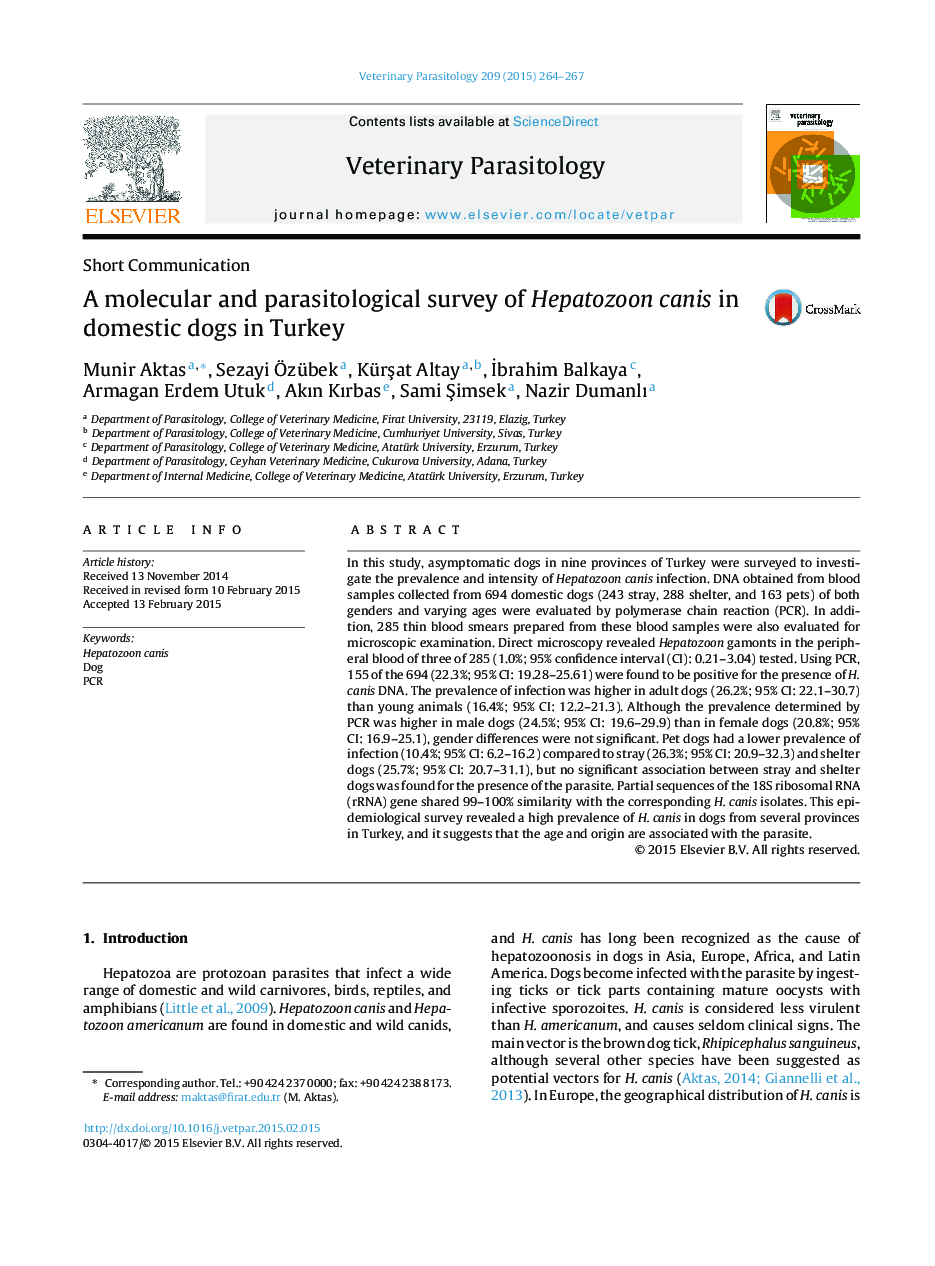| کد مقاله | کد نشریه | سال انتشار | مقاله انگلیسی | نسخه تمام متن |
|---|---|---|---|---|
| 5802729 | 1555672 | 2015 | 4 صفحه PDF | دانلود رایگان |

- Direct microscopy revealed Hepatozoon gamonts in the peripheral blood of three of 285 (1.0%) tested dogs.
- Using polymerase chain recation (PCR), 155 of the 694 (22.3%) were positive for the presence of H. canis DNA.
- The prevalence of infection was higher in adult dogs than juveniles.
- Pet dogs had a lower prevalence of infection compared to stray and shelter dogs.
In this study, asymptomatic dogs in nine provinces of Turkey were surveyed to investigate the prevalence and intensity of Hepatozoon canis infection. DNA obtained from blood samples collected from 694 domestic dogs (243 stray, 288 shelter, and 163 pets) of both genders and varying ages were evaluated by polymerase chain reaction (PCR). In addition, 285 thin blood smears prepared from these blood samples were also evaluated for microscopic examination. Direct microscopy revealed Hepatozoon gamonts in the peripheral blood of three of 285 (1.0%; 95% confidence interval (CI): 0.21-3.04) tested. Using PCR, 155 of the 694 (22.3%; 95% CI: 19.28-25.61) were found to be positive for the presence of H. canis DNA. The prevalence of infection was higher in adult dogs (26.2%; 95% CI: 22.1-30.7) than young animals (16.4%; 95% CI: 12.2-21.3). Although the prevalence determined by PCR was higher in male dogs (24.5%; 95% CI: 19.6-29.9) than in female dogs (20.8%; 95% CI: 16.9-25.1), gender differences were not significant. Pet dogs had a lower prevalence of infection (10.4%; 95% CI: 6.2-16.2) compared to stray (26.3%; 95% CI: 20.9-32.3) and shelter dogs (25.7%; 95% CI: 20.7-31.1), but no significant association between stray and shelter dogs was found for the presence of the parasite. Partial sequences of the 18S ribosomal RNA (rRNA) gene shared 99-100% similarity with the corresponding H. canis isolates. This epidemiological survey revealed a high prevalence of H. canis in dogs from several provinces in Turkey, and it suggests that the age and origin are associated with the parasite.
Journal: Veterinary Parasitology - Volume 209, Issues 3â4, 30 April 2015, Pages 264-267